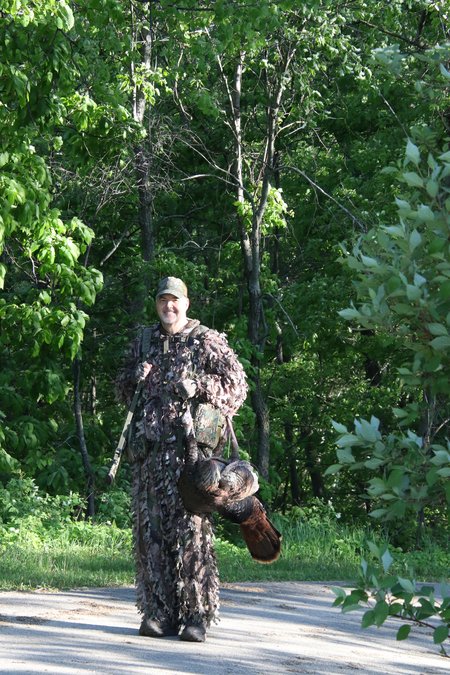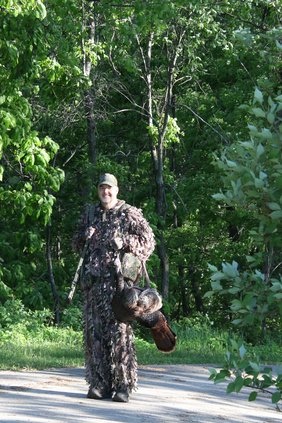Green landscapes are so ubiquitous we may not have noticed a change. Closer glances point out fewer colorful blooms. Ginseng flowers are tiny and green. Mayapples are larger and white but shielded by two umbrella-shaped leaves on blooming plants. Raspberry (blackcap), blackberry, and wild strawberry white blooms are numerous enough to attract attention, especially when the fruits begin to appear green, red or dark purple.
Cedar-apple rust fungus is decorating red cedars and white pine pollen cones paint yellow clusters on trees before releasing yellow grains into the wind.
Insects are getting attention with their “howls” before eye contact is made with mosquitoes, gnats, and cicadas. Ticks are mute, with a howl coming from the notice when victims jump upon seeing something that may have been hitchhiking for days before announcing its presence.
Periodic cicadas should not be ignored, but watched and listened to when they become more numerous in southern Wisconsin. This insect brood only comes above the soil every 17 years. One farmer familiar with the “bug” said it was like being in the midst of five sawyers with chain saws running full throttle.
Doug Williams, at D & W Sports Center in Portage, said the mosquitoes and gnats are terrible. “Expect them and plan for them when fishing, hiking, camping and working in yards and gardens.”
On a “be aware” note, Williams, Don Martin at Martin’s in Monroe and Tom Lockner, at Wilderness Fish and Game in Sauk City anticipate prices increasing a bit when outdoors activities go full bore. Some specialty items, Martin warns, are still difficult to find, including odd calibers of ammunition.
Turkey hunters have stashed their decoys, calls, camouflage, implements of capture, and headed home.
Dave and his adult son John Northcutt, are now back in Alabama with enough white meat to feed Thanksgiving guests. A sizeable number of southern turkey hunters call Wisconsin their wild turkey destination and while leaving with some of our Eastern birds, also left some quiet counsel.
John Northcutt was here two years ago, returned with dad this time, and left sentiment with landowners. We could sit and listen until a gun discharged, and beyond. He stopped by in 2022, out of the blue, and asked to hunt. He knew the names of landowners from maps and apps he carried. Without further scouting he was back the next morning before a rooster crowed.
I heard his mouth call, the gobbler’s response, a shotgun blast, and then an hour wait before he came carrying up the drive. “Where’s your gun,” I asked when focusing a camera. “Oh, it was such a great morning, great experience I sat and took in spring for an hour on your ridge. I’ll pass on a ride back for the forgotten gun, but enjoy the walk and morning a little more.”
John Northcutt dropped his father off this year. who headed to the same spot, and I heard his shot at 5:20 am, about like two years earlier. I was tilling the garden when Dave Northcutt walked up the drive with his three-year-old gobbler. “Where have you been? I heard you shoot two hours ago,” I said. “I dozled off and on, enjoying the morning before walking out,” he said.
For those Wisconsin turkey hunters, don’t be too frustrated; the Alabama hunters credit Wisconsin’s birds as being much “smarter” than those hunted in a dozen or so other states.
Kelly Maguire, at the Poynette Game farm said the crew is well on the way to pulling off 13 hatches of thousands of ring-necked pheasants. “These 17,000 chicks from today will be going out to some of the 13 clubs in the day-old-chick program.”
Maguire said the plan, like last year, is to have 75,000 adult pheasants to release this fall and the clubs will have more than 10,000 birds for their releases.
Biosecurity remains tight at the game farm even though Wisconsin remains free of avian flu, Maguire added.
Fishing was generally good before the recent spring storms, Tom Lockner at Sauk City said. Madison’s Lake Mendota has been very good with walleyes biting early and late but for a better catch consider fishing at night. Lake Wisconsin is the place for bluegills, now after the crappies are done spawning.
Those showy, white flowers on trees could belong to black cherry, black locust, or catalpa. The ones that resemble a tulip, have some green and orange are tuliptree blossoms.
The elk application period ends May 31 and includes Clam Lake and Black River Falls gangs.
Contact Jerry Davis, a freelance writer, at sivadjam@mhtc.net or608.924.1112.





